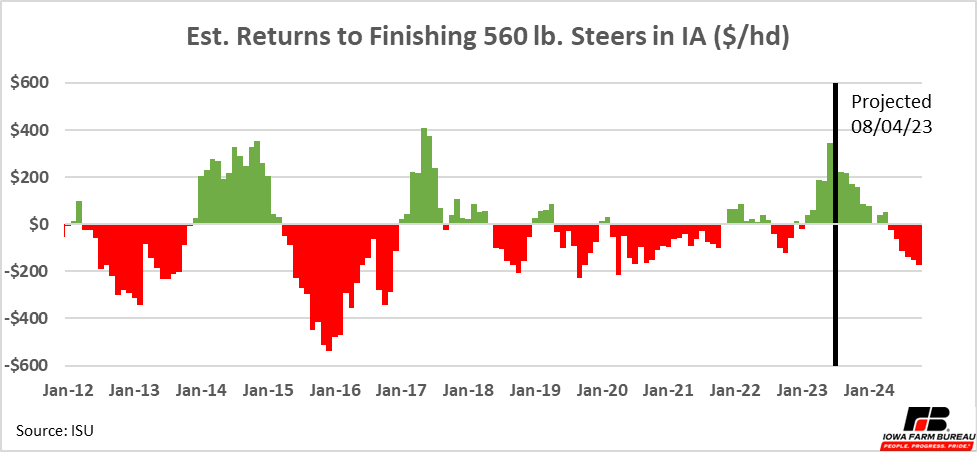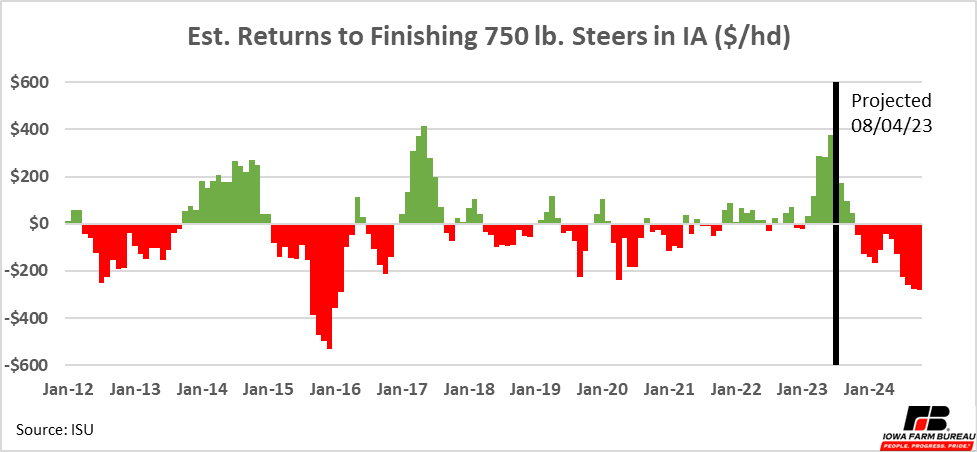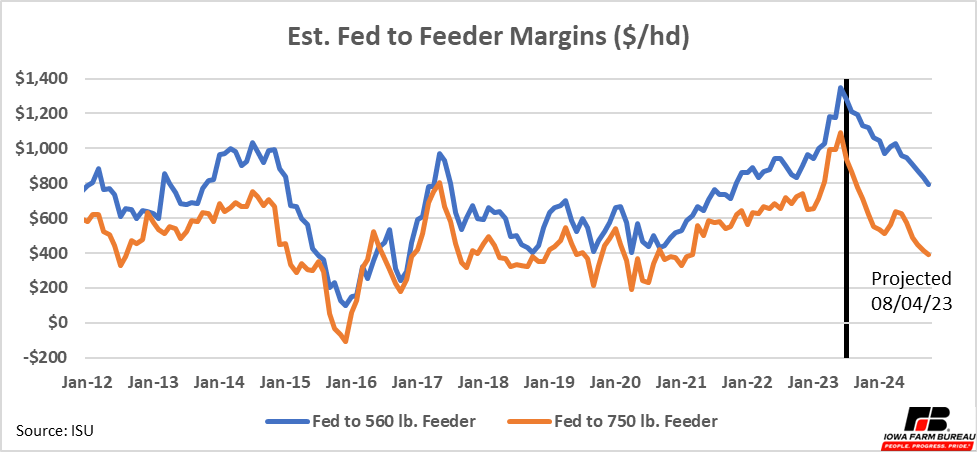Iowa cattle feeding returns strong but forecasted to collapse
Author
Published
8/7/2023
Cattle returns have looked strong so far this year. However, one big reason for this is fed cattle sold today are purchased are least 6 months prior to when they are sold. Cattle prices have been rising over quicky over the past few months, so feeder cattle sold today as fed cattle have a lower cost basis than new feeders purchased today. If fed cattle prices were to decrease or even remain constant from where they are today, expected returns are likely to decrease moving forward simply due to a higher cost basis for feeder cattle.
Iowa State University (ISU) publishes monthly estimates of production costs and revenues for a variety of livestock operations including cattle feedlots. For feedlots, ISU publishes estimates for both 560 lb. feeders and 750 lb. feeders. The ISU model assumes 560 lb. feeders are on feed for 10 months and 750 lb. feeders are on feed for 6 months with both being sold as fed cattle at 1300 lbs. Keep in mind all estimates of returns or losses are not accurate for every farm. Farm costs can vary significantly by farm. These estimates are only meant to provide a general gauge of industry profitability.
To estimate future cattle returns, futures prices and historic average basis levels were used to estimate forward prices for fed cattle, feeder cattle, and corn. These variables have the largest effect on estimated returns. Other variables were assumed to be constant moving forward. While this is not likely to be the case, because other costs have less impact on results, potential changes of these costs were ignored.
The most recent estimates of returns to feeding cattle are almost $350 per head for 560 lb. steers and almost $380 per head for 700 lb. steers (Figure 1 & Figure 2). However, returns are projected to decrease moving forward. Returns to finishing 560 lb. steers are projected to turn negative in May 2024 and returns for 750 lb. steers are projected to turn negative even sooner in November 2023.

Figure 1. Estimated Returns to Finishing 560 lb. Steers in IA ($/head)

Figure 2. Estimated Returns to Finishing 750 lb. Steers in IA ($/head)
The biggest driver of the projected change in feedlot returns is the change in the effective margin between fed cattle and feeder cattle (Figure 3). Because feeder cattle prices are lagged in this model by 10 months for 560 lb. feeders and 6 months 750 lb. feeders, lower prices from previous months make returns to cattle look good now. However, as time goes on the cost basis of feeder cattle begins climbing faster than fed cattle prices are expected to in the future. This leaves less room to cover other operating and fixed costs and decreases the returns to feeding cattle moving forward.

Figure 3. Estimated Fed to Feeder Margins ($/head)
Economic analysis provided by Aaron Gerdts, Research Analyst, Decision Innovation Solutions on behalf of Iowa Farm Bureau.
Want more news on this topic? Farm Bureau members may subscribe for a free email news service, featuring the farm and rural topics that interest them most!